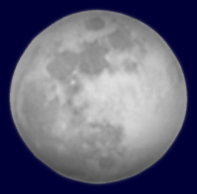
The Snow Moon will be 100% full February 14, 2014 at 4:54 P.M. Mountain time.
The following information is from The Old Farmer’s Almanac
Full Moon Names
February’s full Moon is traditionally called the Full Snow Moon because usually the heaviest snows fall in February.
Hunting becomes very difficult, and so some Native American tribes called this the Hunger Moon.
Other Native American tribes called this Moon the “Shoulder to Shoulder Around the Fire Moon” (Wishram Native Americans), the “No Snow in the Trails Moon” (Zuni Native Americans), and the “Bone Moon” (Cherokee Native Americans). The Bone Moon meant that there was so little food that people gnawed on bones and ate bone marrow soup.
Farmer’s Almanac’s Full Moon Video featuring, Amy Nieskens
“Each month, we will explain the traditional names of the full Moon along with some fascinating Moon facts. In this video, learn about February’s Full Snow Moon. Click below to watch video.”
Full Moon Names
Native Americans full Moon names were created to help different tribes track the seasons. Think of it as a “nickname” for the Moon! See our list of other full Moon names for each month of the year and their meanings.
Why Native Americans Named the Moons
The early Native Americans did not record time by using the months of the Julian or Gregorian calendar. Many tribes kept track of time by observing the seasons and lunar months, although there was much variability. For some tribes, the year contained 4 seasons and started at a certain season, such as spring or fall. Others counted 5 seasons to a year. Some tribes defined a year as 12 Moons, while others assigned it 13. Certain tribes that used the lunar calendar added an extra Moon every few years, to keep it in sync with the seasons.
Each tribe that did name the full Moons (and/or lunar months) had its own naming preferences. Some would use 12 names for the year while others might use 5, 6, or 7; also, certain names might change the next year. A full Moon name used by one tribe might differ from one used by another tribe for the same time period, or be the same name but represent a different time period. The name itself was often a description relating to a particular activity/event that usually occurred during that time in their location. read more from The Old Farmer’s Almanac